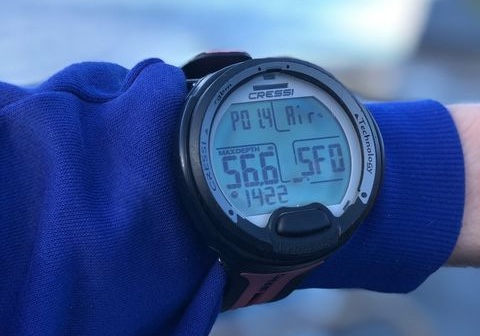I remember buying my first ever dive computer and thinking “how the hell do I actually use this thing”!? Luckily it was a simple, beginner-friendly model and I quickly got the hang of it.
I’ve had a whole bunch of dive computers over the years. Naturally, I started with beginner friendly models that were easy to use and affordable. That’s why I’ve created this handy guide; outlining the best dive computers for beginners in 2025!
The dive computers reviewed on this page all have simple user-interfaces; easy designs and are cheap to mid-price. They’ve been designed especially with new divers in mind.
Use the Quick Look section below to get a quick, bullet-point glance at each dive computer or dive down deeper for Detailed Reviews.
All dive computers show your current depth, timed dived, ascent rate and decompression info; all of which are essential for planning dives.
Even if someone else is guiding a dive; having your own dive computer makes you a safer diver as you’ll dive within your own individual parameters. Plus; if you ever get lost on a dive; having your own dive computer will help you end the dive safely.
So; you don’t need to be a super advanced diver before getting a dive computer! I’d actually recommend buying one to anyone whose passed their open water certification and plans on diving at least a few times a year.
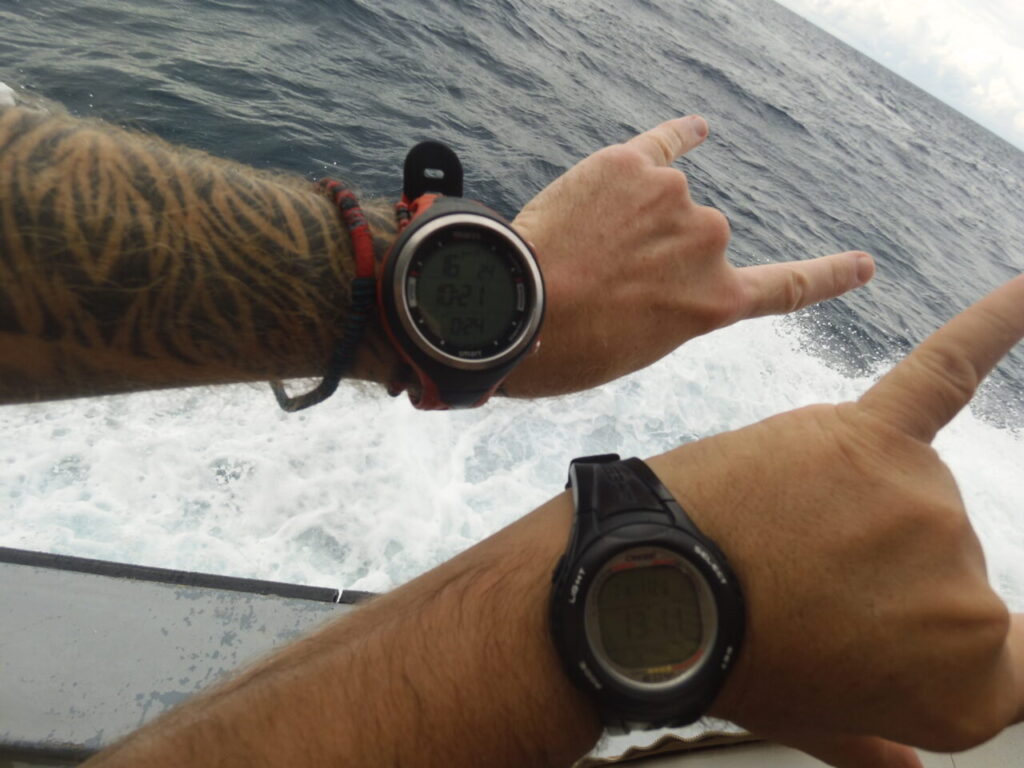
That said; some dive computers are a lot more fancy (and subsequently expensive!) than others.
For beginner divers; there’s not really much point in spending a load of money on an overly complicated; professional-standard dive computer that has many extra features they’ll neither use nor understand.
It makes far more sense to first have a simple dive computer that is easy to use and understand and isn’t over-complicated with unnecessary extra features. You can save that for when you have more dives under your weightbelt!
With all this in mind; let’s now take a look at the best beginner dive computers available in 2025!
QUICK LOOK
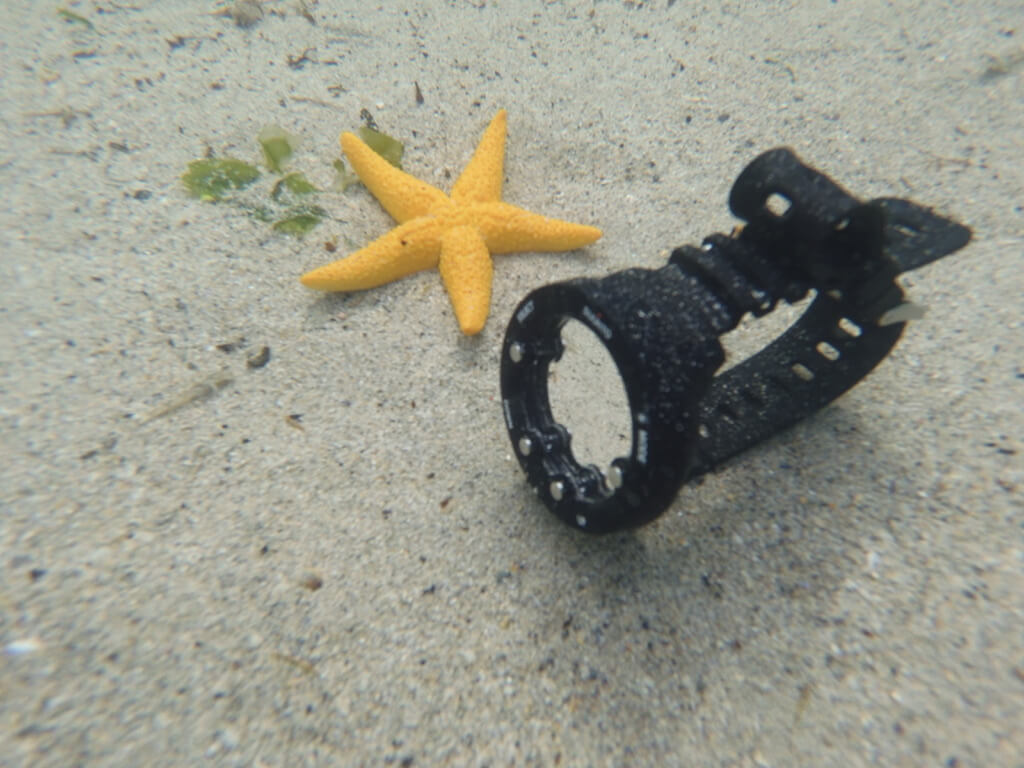
1) Top Pick: Suunto Zoop Novo
Price: $$
Huge Screen
Easy to Use (4 buttons)
Big Dive Log (140 hours)
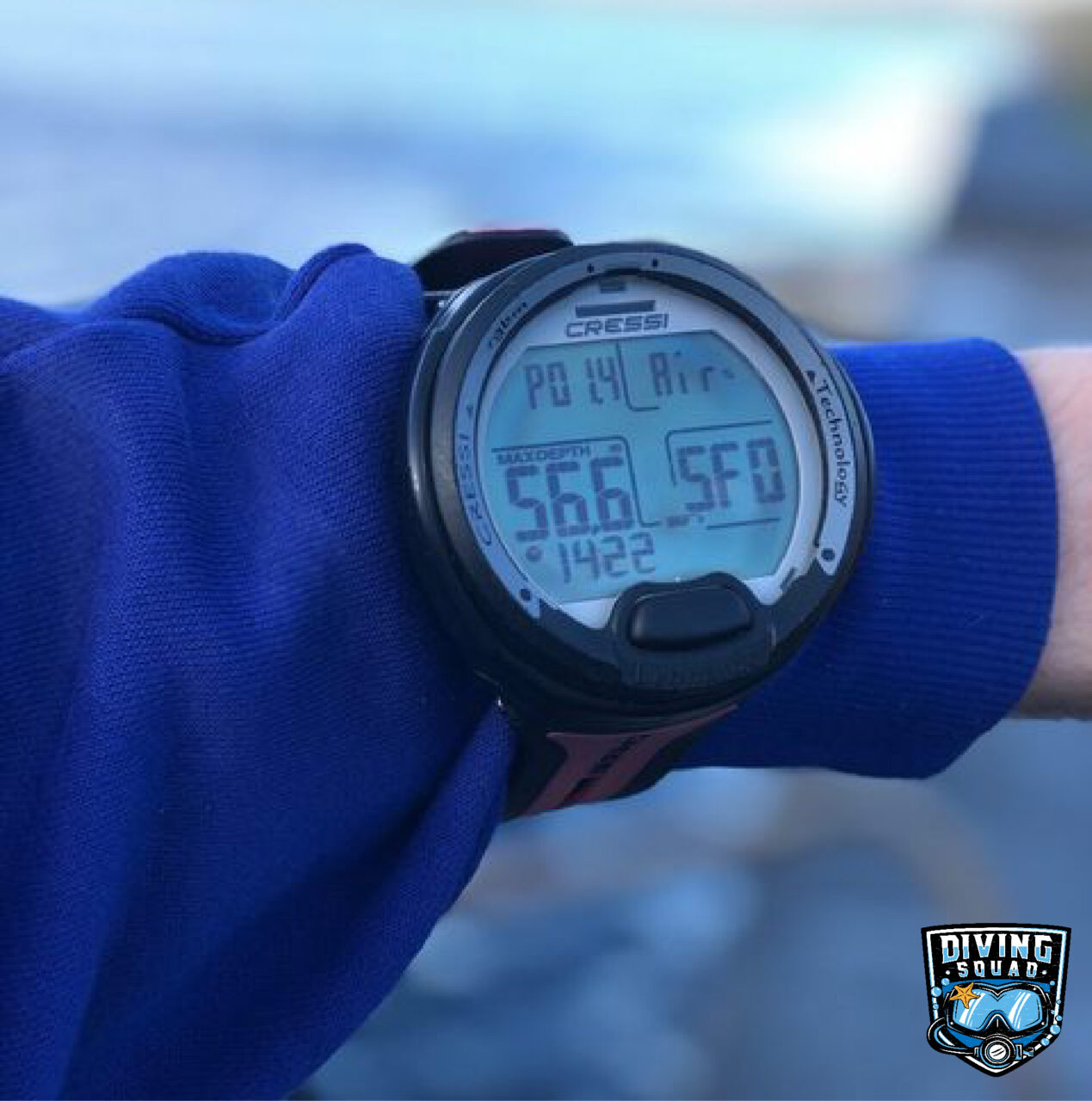
2) Biggest Screen: Cressi Leonardo
Price: > $
Massive Screen
Simple (1 button interface)
Medium Dive Log (70 hours)
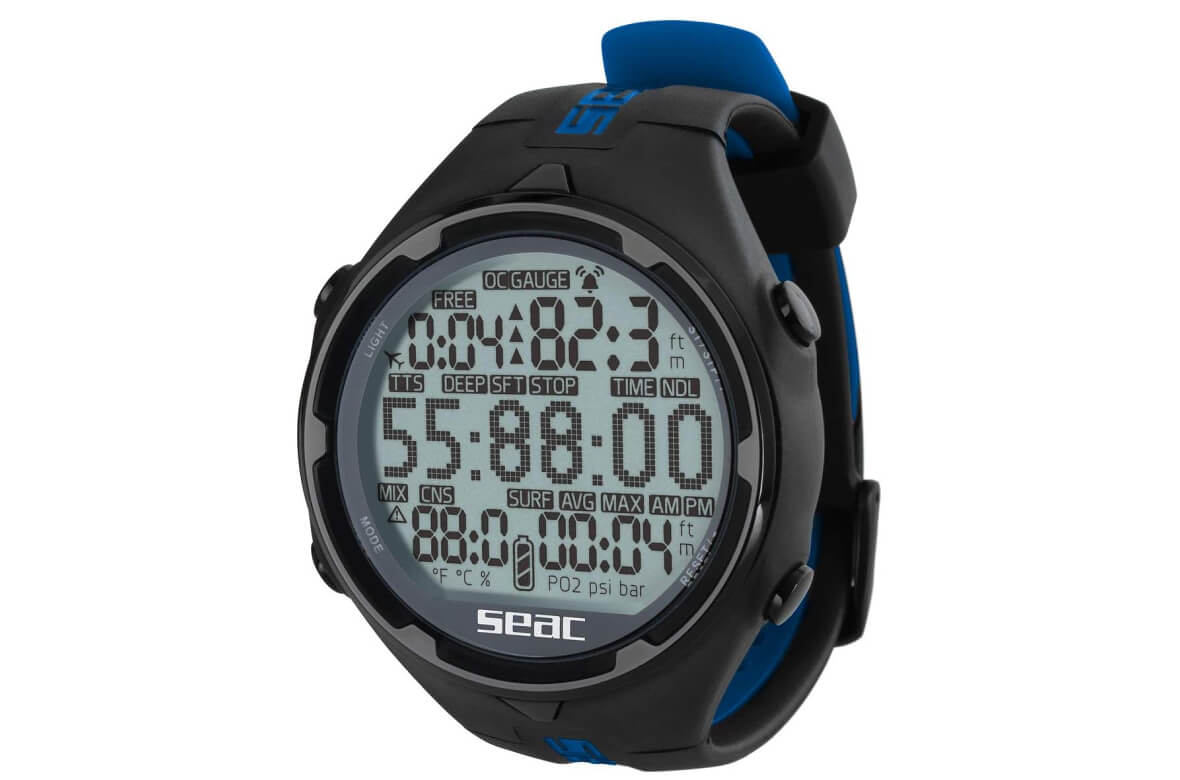
3) Cheapest: Seac Action HR
Price: > $
Durable
Simple to Use
Compact
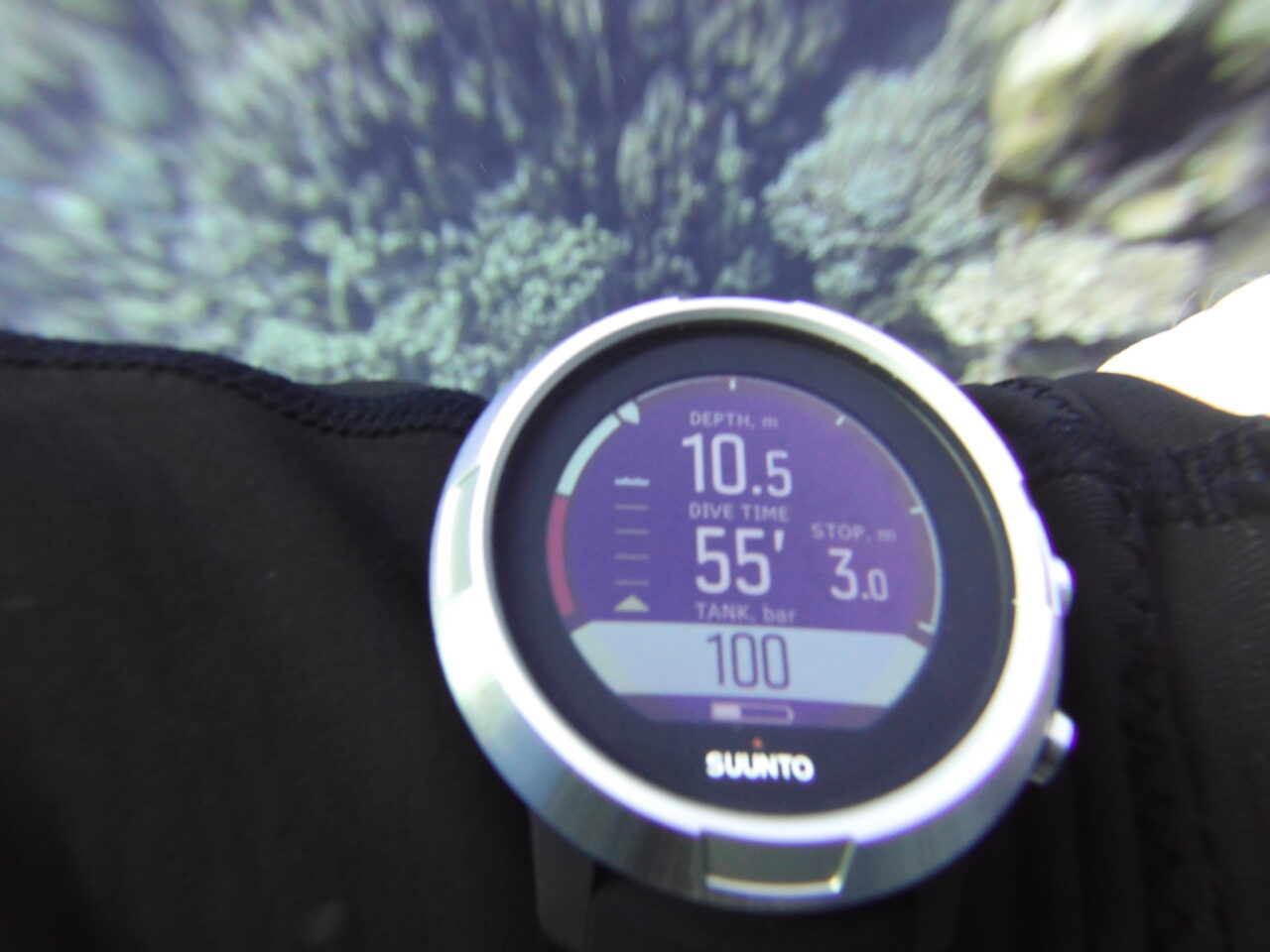
4) Best Luxury Option: Suunto D5
Price: > $$$
Colour-Coded LED Display
Simple User Interface
Air Integration & Compass
Huge Dive Log (200 hours)
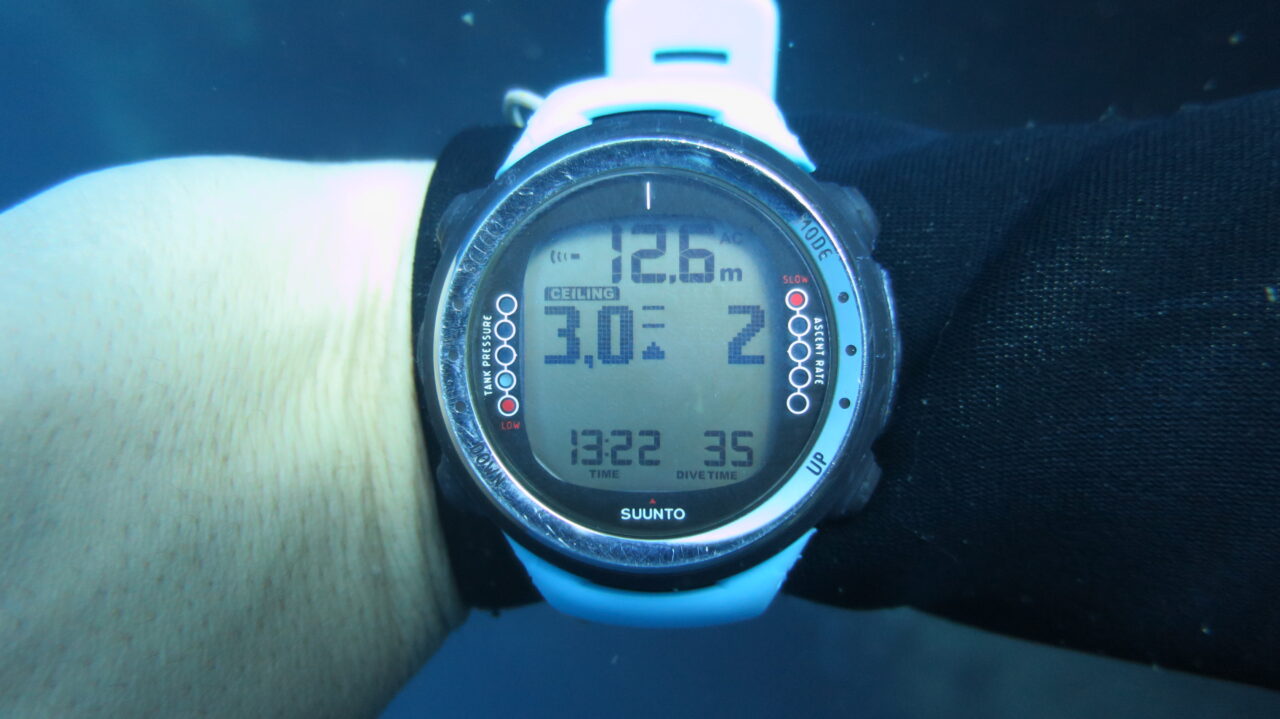
5) Best Mid-Pricer: Suunto D4i
Price: > $$
Air Integration
Easy to Use
Compact
Big Dive Log (140 hours)
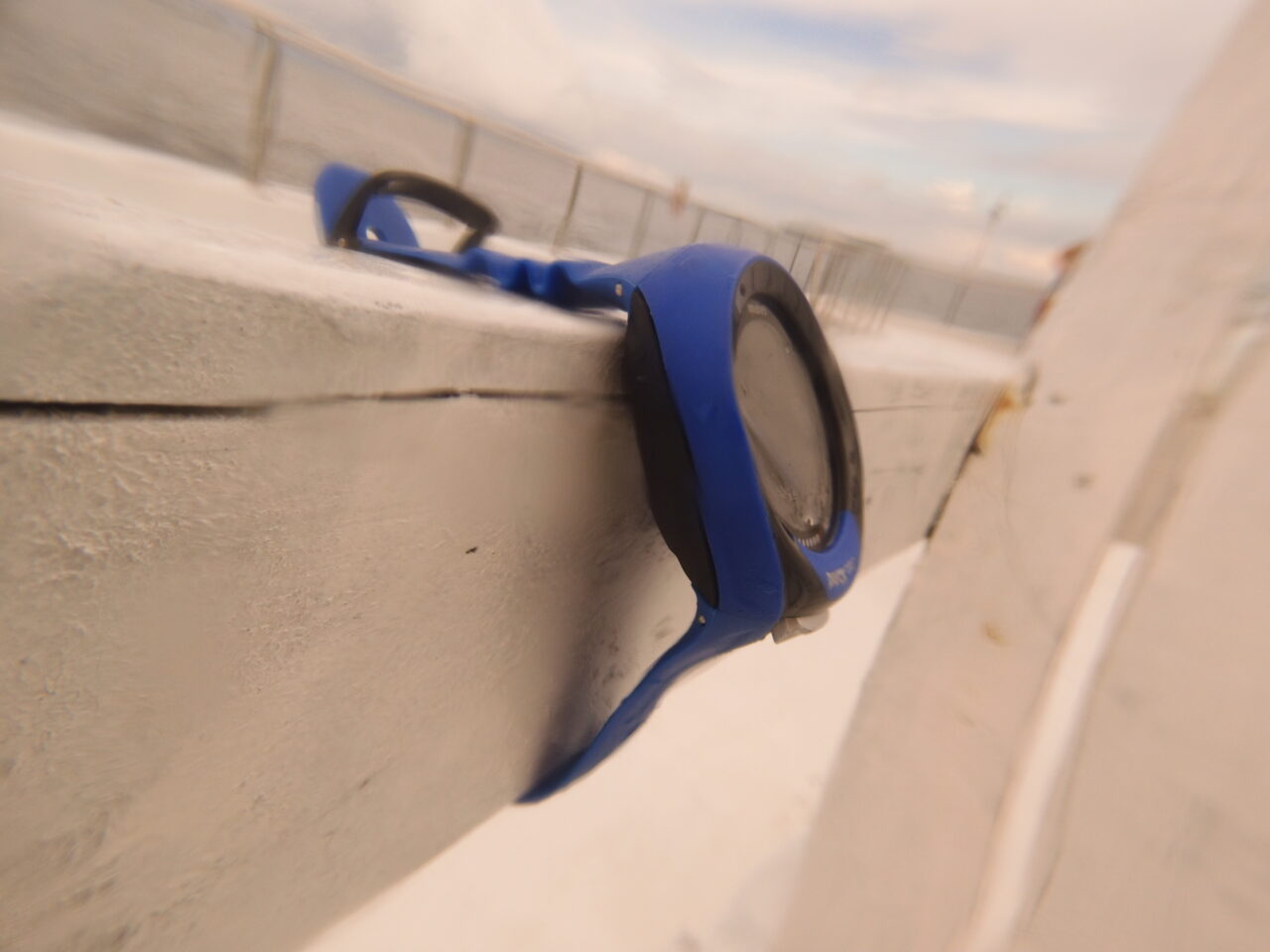
6) Huge Battery Life: Mares Puck Pro
Price: > $
Huge Battery Life (400 hours)
Simple 1 Button User-Interface
Freshwater & Salinity Settings
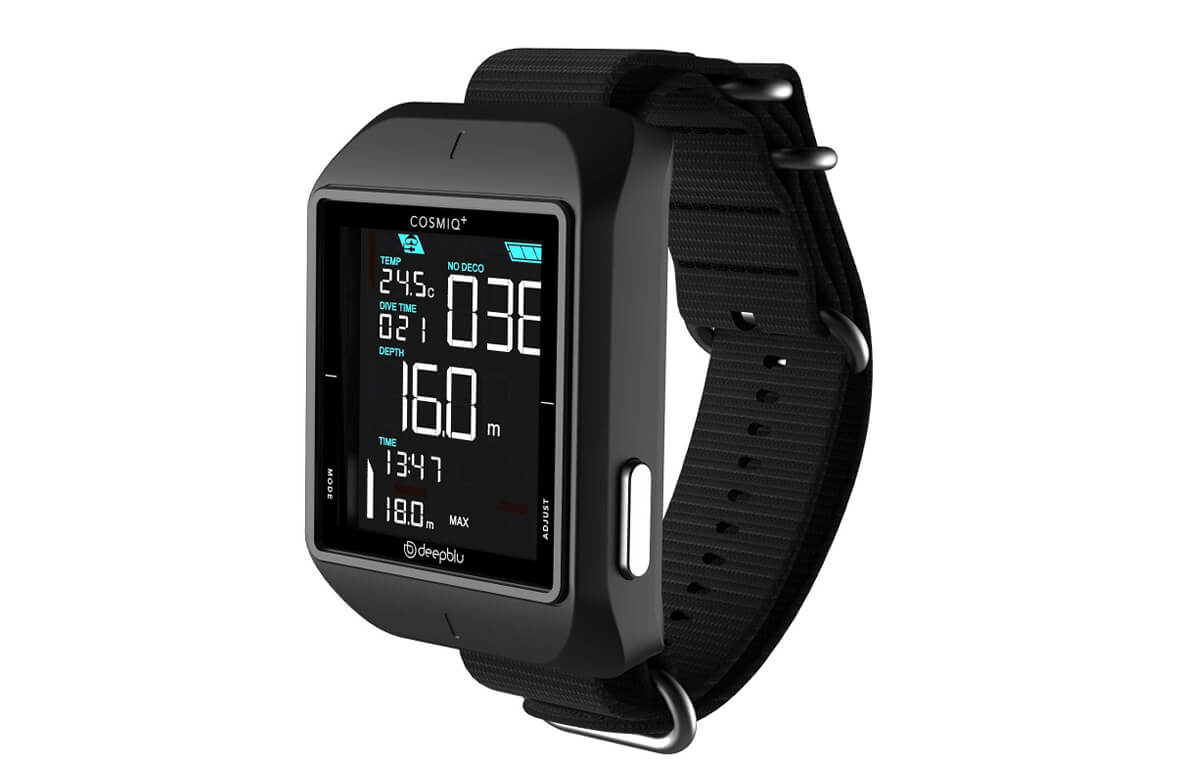
7) Cheapest HD Display: Deepblu Cosmiq+
Price: > $
HD Display with Adjustable Brightness
Rechargeable Battery
Big Logbook (160 hours)
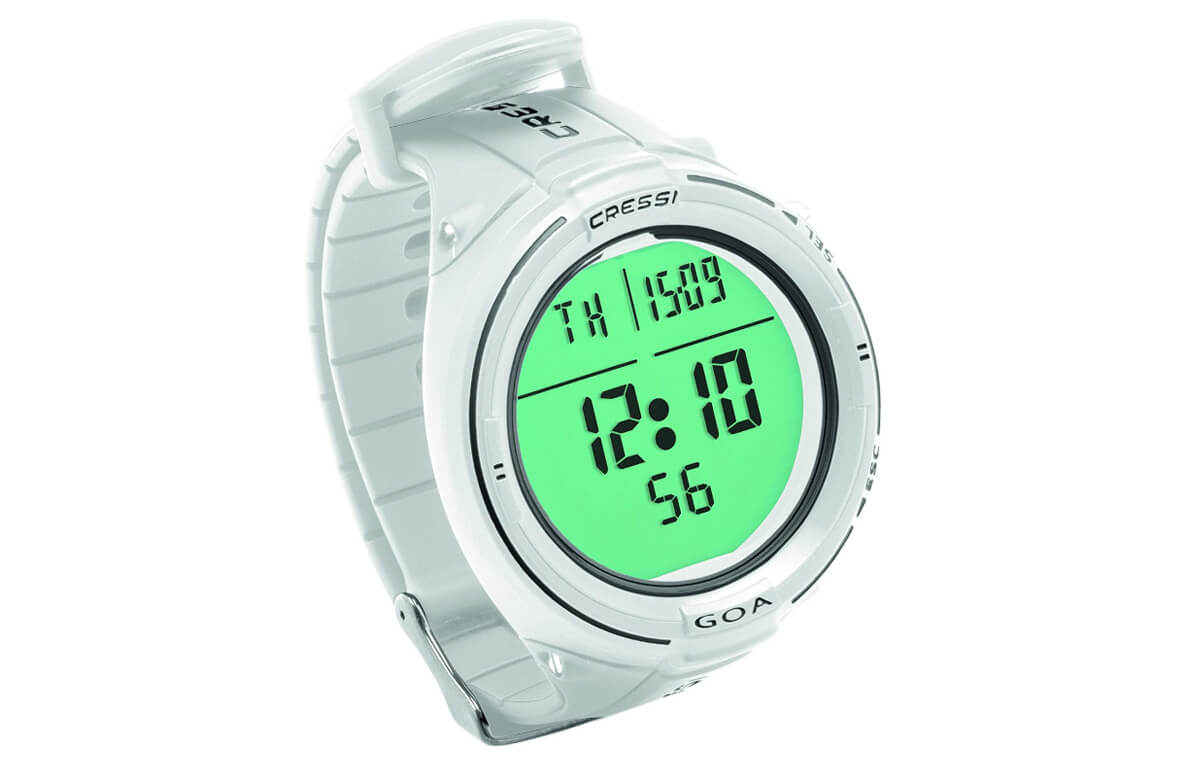
8) Budget Watch-Sized: Cressi Goa
Price: > $
Watch-Sized
Customisable Alarms
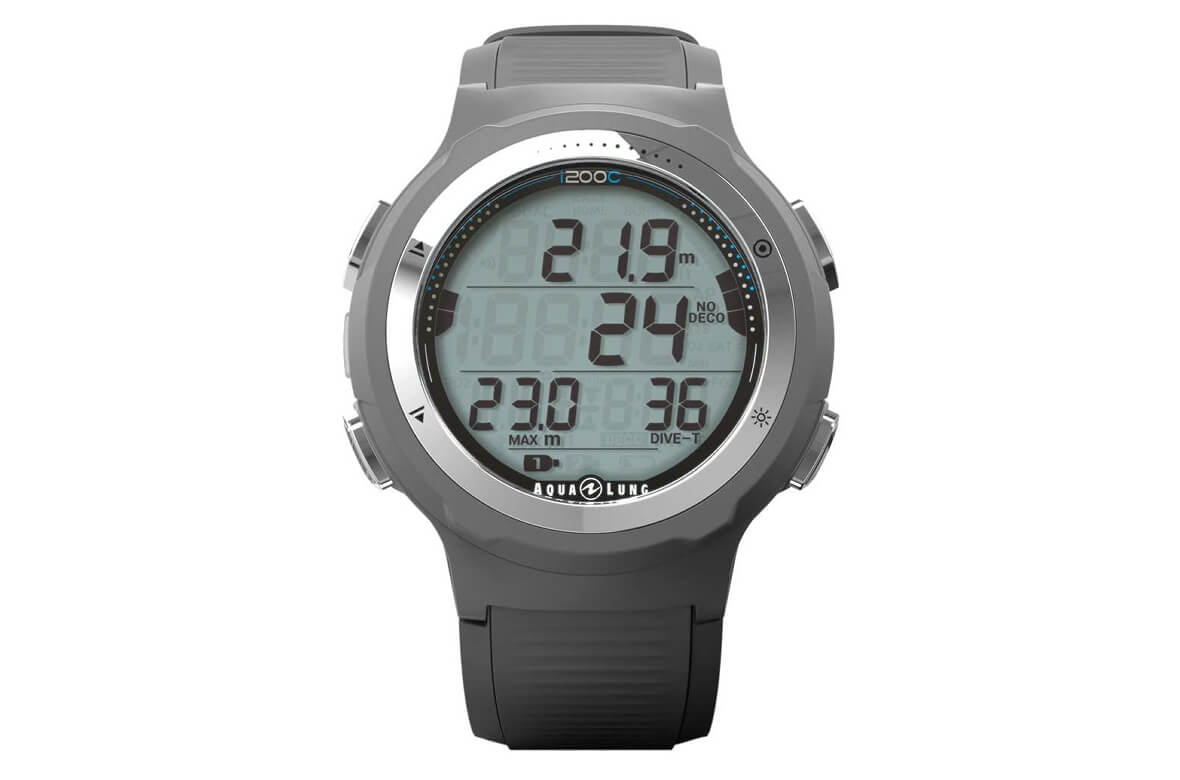
9) Many Colours: Aqualung I200C
Price: > $$
Many Colours for Case & Strap
4 Button User-Interface
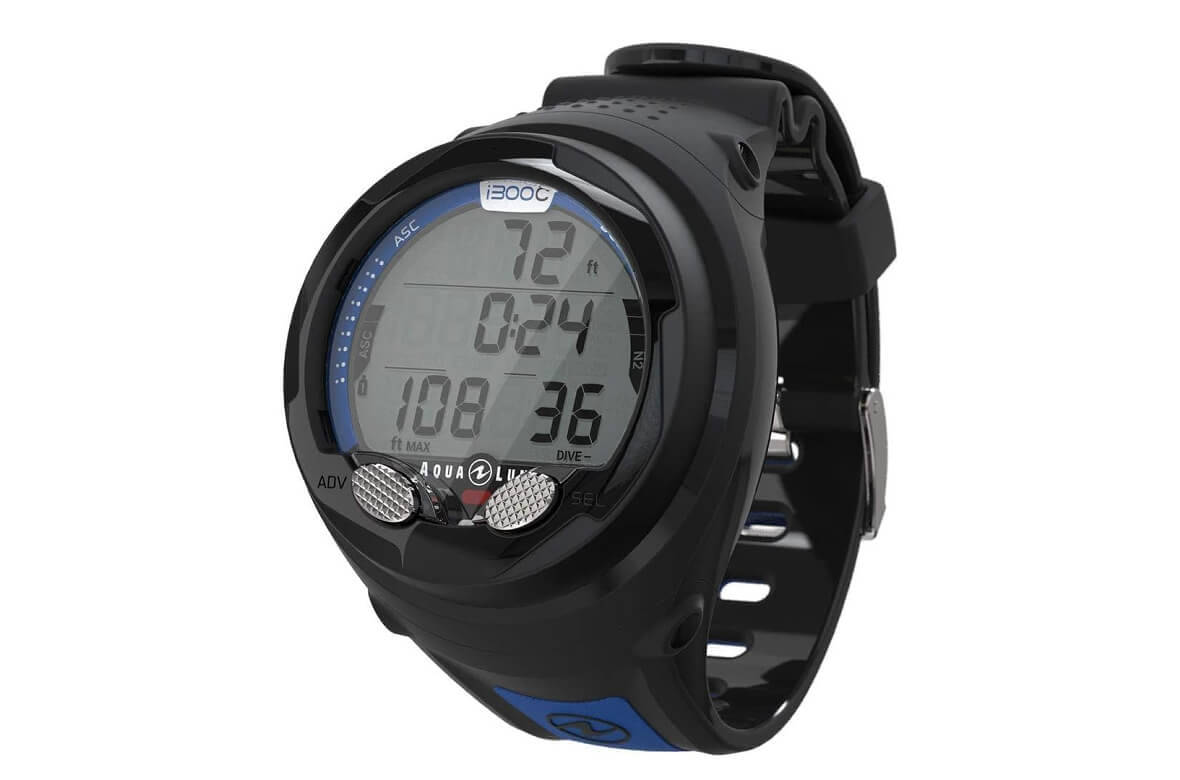
10) Cheap Bluetooth: Aqualung I300C
Price: > $$
Bluetooth Tech
Easy to Use
Reviews of Best Dive Computers for Beginners
- TOP PICK: Suunto Zoop Novo
- Biggest Screen: Cressi Leonardo
- Cheapest: Seac Action HR
- Best Luxury Option: Suunto D5
- Best Mid-Pricer: Suunto D4i Novo
- Huge Battery Life: Mares Puck Pro
- Cheap HD Screen: Deepblu Cosmiq+
- Budget Watch-Sized: Cressi Goa
- Many Colours: Aqualung i200C
- Cheap Bluetooth Tech: Aqualung i300C
1) TOP PICK: Suunto Zoop Novo
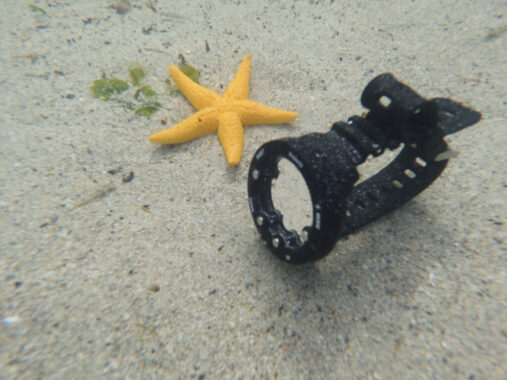
Where to Buy:
- Price: > $$
- Huge Screen
- Simple User-Interface (4 Buttons)
- Only shows Essential Dive Profile Data
- Big Dive Log (140 hours)
My first ever dive computer was a Zoop Novo and it served me extremely well as a beginner thanks to it’s simple user-interface, large screen and durability.
With a diameter of 56mm, the Zoop Novo has one of the largest displays of any dive computer. Dive profile data presented in large, easy-to-read digits on this simple dot-matrix screen. Only essential dive profile info is shown: deco time, depth, dive time and depth so as not to overwhelm newbies.
The Zoop Novo features a four button interface which makes navigating the settings both quick and easy. With 140 hours storage space, its dive logbook is also bigger than that of most other cheap dive computers. It has a user-replaceable lithium battery that lasts roughly 150 dives.
Admittedly, the Zoop Novo is a little bulky which means that unlike more expensive dive computers you can’t wear it as an everyday watch and it may sometimes can get momentarily snagged on your bcd strap when you’re suiting up.
Also, whilst the lack of advanced features (e.g. air integration, compass etc) makes it super easy to use it does mean that as you become a more advanced diver you may want to upgrade your dive computer.
However as a first buy, the Zoop Novo is reliable, easy and awesome. And because it’s so affordable, if you do later upgrade you won’t have spent too much money.
PROS:
- Durable
- Easy to Use
- Huge Screen
- Big Dive Log
- Affordable
CONS:
- Quite Bulky
- No Advanced Features
2) Biggest Screen: Cressi Leonardo
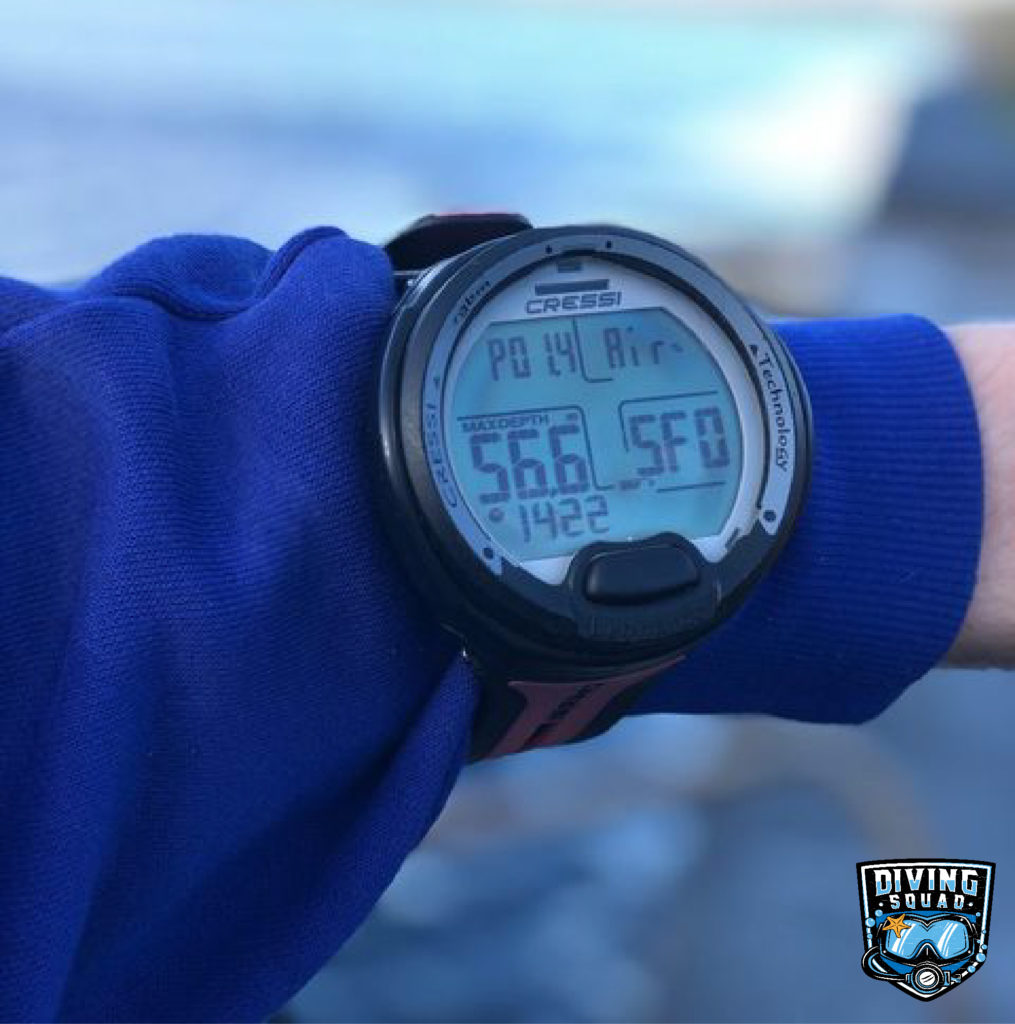
Where to Buy:
- Price: > $
- Huge Screen (biggest of any dive computer)
- Simple User-Interface (1 Button)
- Only shows Essential Dive Profile Data
With a display diameter of 67mm, the Cressi Leonardo is the only dive computer with a bigger screen than the Suunto Zoop Novo. This makes it insanely easy to read the huge digits on the simple dot-matrix display which only shows the most essential dive profile data so as not to overwhelm beginners and also features a backlight.
The Cressi Leonardo is also one of the cheapest dive computers on the market; it’s both cheaper than the Suunto Zoop Novo and only slightly more expensive than the all-time cheapest dive computer (reviewed next).
It has a single button user-interface which makes it incredibly simple to navigate the settings; albeit a little slow compared to dive computers with more buttons. At 70 hours long, the logbook is a decent size; whilst the user-replaceable lithium battery lasts roughly 150 dives; a pretty standard length for a budget dive computer.
Another thing we like about the Cressi Leonardo is that it’s available in a wider range of colours than just about any other dive computer; meaning you can choose the perfect style for you!
PROS:
- Biggest Display of any dive computer
- One of Cheapest Dive Computers out there
- Super-simple One Button User-Interface
- Durable and Reliable
CONS:
- No Advanced Features
- Bulky
3) Cheapest: Sea Action HR
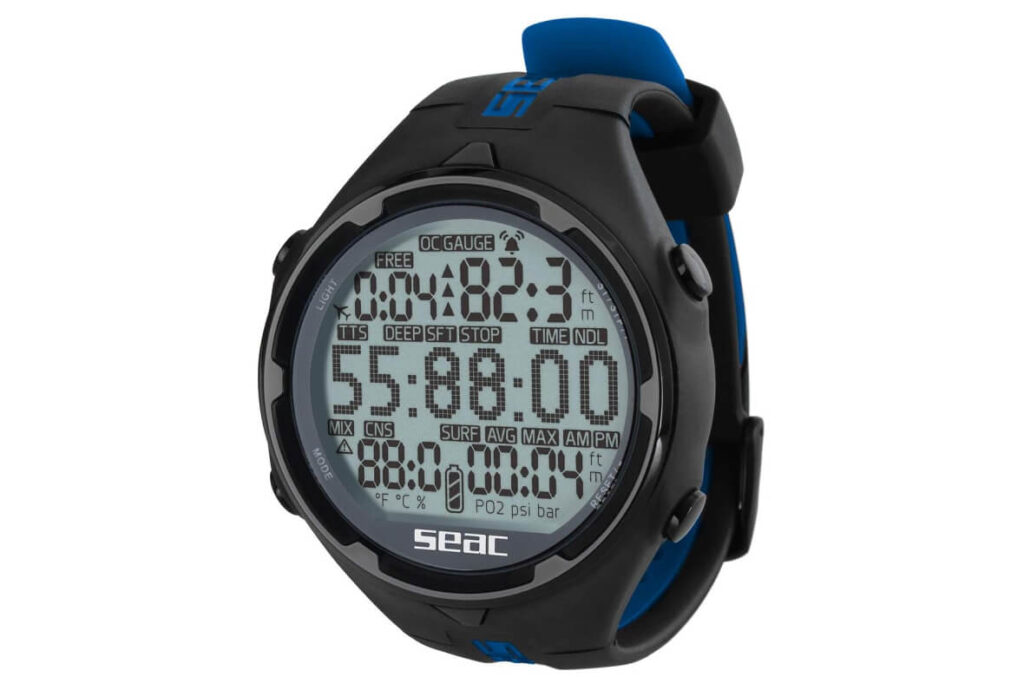
Where to Buy:
- Price: > $
- Durable
- Adjustable Backlight
- Only shows Essential Dive Profile Data
Without a doubt, the Seac Action HR is the all-time cheapest dive computer currently available. Constructed from plastic and with a small logbook of just 40 hours; it is an extremely basic piece that lacks any advanced features but at least that means it’s straightforward to use for newbies.
With a display diameter of just 38mm it’s actually a lot more streamlined than dive computers like the Cressi Leonardo and Suunto Zoop Novo; being the size of a large watch.
It provides all the essential dive profile data and can operate in air, nitrox and freedive mode as well as featuring a stopwatch. The dot-matrix LCD screen clearly displays the necessary info.
Even though it’s made from plastic, the Seac Action HR is surprisingly durable: the HR actually stands for High Resistance as it can withstand blows, scratches and corrosion pretty well. Plus you can adjust the brightness of the backlight allowing you to easily read it on night dives.
PROS:
- Compact
- Durable
- Adjustable Backlight
- Easy to Use
CONS:
- Super Basic
- No Advanced Features
- Seac are not a very well known brand
4) Best Luxury Option: Suunto D5
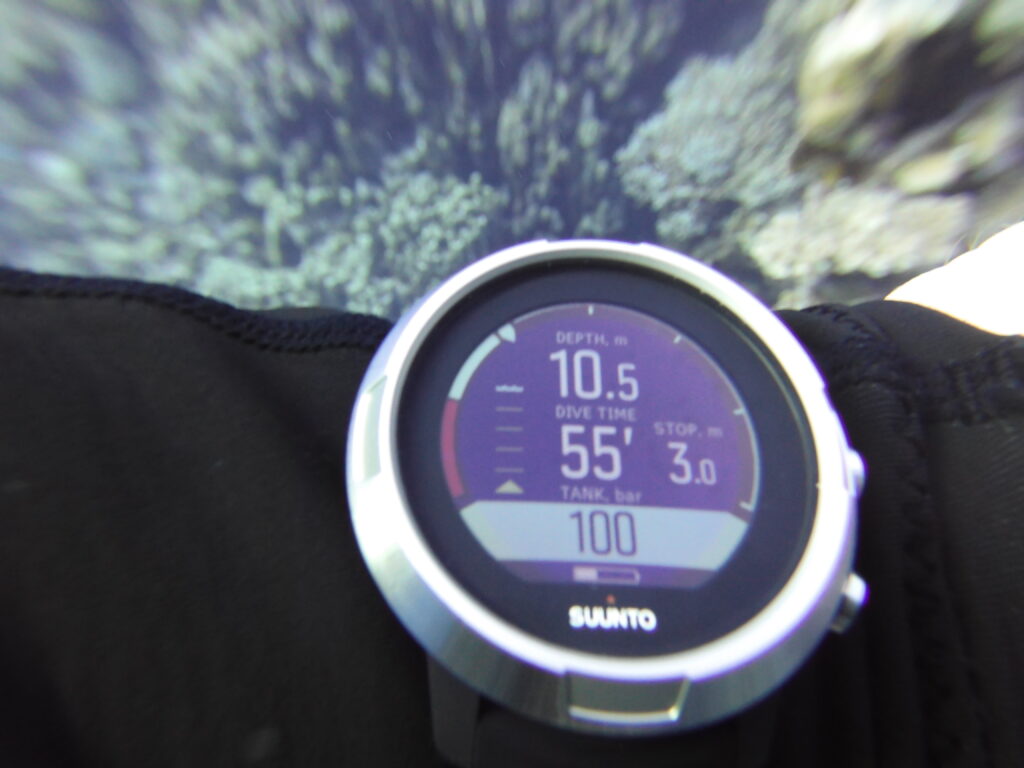
Where to Buy:
- Price: > $$$
- Colour-Coded HD Display
- Digital Compass
- Air Integration
- Adjustable RGBM Algorithm
- 200 Hour Logbook
Although more expensive than the other options on this list, the Suunto D5 is an amazing dive computer that is both extremely beginner-friendly yet also crammed with advanced, yet-easy-to-use features that you can work with as you progress.
The ultra high definition display is colour coded which makes it incredibly intuitive to read data off of. There’s several data display modes to choose from so whilst you can have it show just essential dive profile data, it can also give readings like tank pressure and remaining air time when paired with a wireless transmitter.
There’s also a digital compass plus the RGBM algorithm can be adjusted to be more conservative which is a useful feature for beginners who want to dive in as safe a manner as possible. But it can also be made less conservative to keep up with you as you become a more advanced diver.
Unlike most dive computers which run on a lithium battery that has to be replaced every 150 dives or so, the Suunto D5 is charged via a USB cable; lasting roughly 7 – 8 hours in dive mode. It has a huge 200 hour logbook that’s easy to download on to your computer thanks to the USB cable.
Stylish, durable and watch-sized, the Suunto D5 is a beautiful looking dive computer with a silicone strap for comfort and a titanium bezel that gives it a somewhat nautical appearance. It’s been one of my favourite dive computers for quite some time!
PROS:
- Easy to Read Display
- Durable
- Simple User-Interface
- Inbuilt Compass
- Air Integration
- Adjustable RGBM algorithm
CONS:
- No smartwatch functions
- No tec mode
- Fairly short battery life (7 hours)
5) Best Mid-Pricer: Suunto D4i Novo
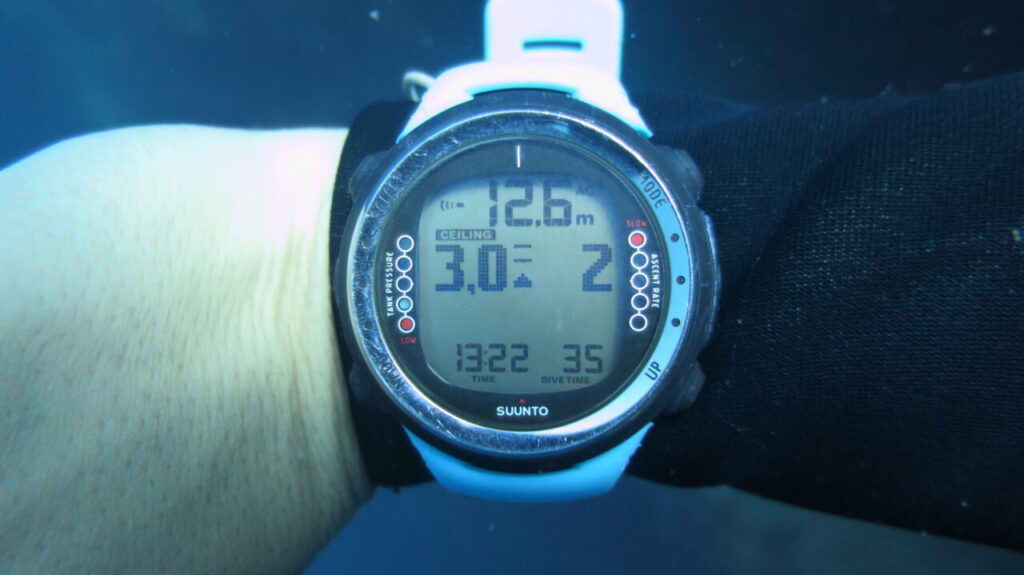
Where to Buy:
- Price: > $$
- Watch-Sized
- Air Integration
- Big Dive Log (140 hours)
Durable, light and compact: the Suunto D4i is about the same size as a regular watch meaning you can easily wear it all day long, knowing full-well that you look damn good!
Featuring a built-in dive planner, it’s dive log is an impressive 140 hours and can be downloaded onto your PC or Mac using a separately purchased USB cable.
This is the cheapest dive computer to feature air integration tech meaning when paired with an (also separately purchased) transmitter it will show tank pressure (remaining air); a seriously handy feature that saves you having to fiddle around with your gauge every time you want to know how much air you have left!
The D4i is a highly popular, mid-priced dive computer with a straighforward to use four-button user interface and easy to read dot-matrix display with customisable settings.
PROS:
- Cheapest Air Integration Dive Computer
- Watch-Sized
- Durable
- Easy to Use
CONS:
- Besides Air Integration tech, no other advanced features
6) Huge Battery-Life: Mares Puck Pro
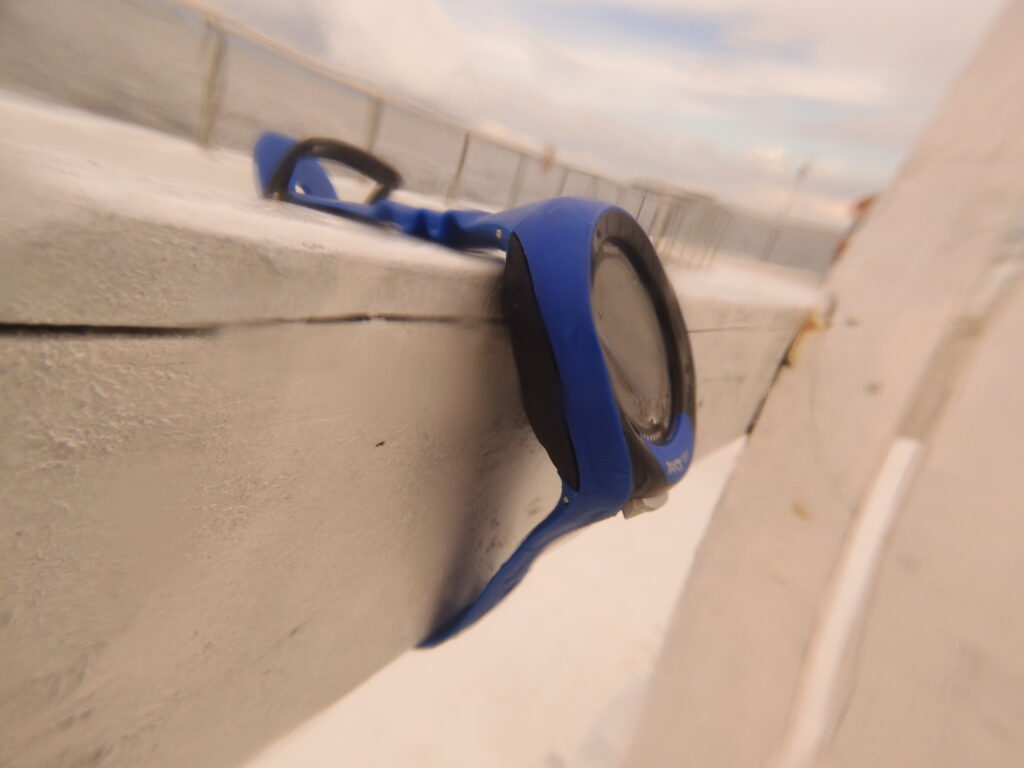
Where to Buy:
- Price: > $
- Huge Battery Life (400 hours)
- Ultra-Simple One Button Interface
- Freshwater & Salinity Settings
When you first get into diving it can be easy to forget simple things like equipment maintenance e.g. ensuring your dive computer’s battery has enough charge. But the Mares Puck Pro; this problem is much eliminated as its user replaceable battery has a whopping duration of 400 hours; over twice as long as many other models.
This is an incredibly easy to use dive computer; it has a one button user interface which makes the settings very simple to navigate; albeit a little more slow compared to dive computers with more buttons.
With large numbers that are easy to read on the big screen, air, nitrox and gauge modes, as well as freshwater and salinity settings; this is a popular dive computer that offers awesome value for money; considering how affordable it is. That said, it’s worth noting that at 35 hours, its dive log is very small.
The addition of the graphic tissue loading bar is also a great extra feature, plus it’s bluetooth compatible for uploading dive log data to a Mac or PC.
PROS:
- Huge battery life (400 hours)
- Easy to use single button interface
- Freshwater and Salinity Settings
- Bluetooth compatible
CONS:
- Tiny logbook – 35 hours
- Can’t adjust settings underwater
- No advanced features
7) Cheap HD Display: Deepblu Cosmiq+
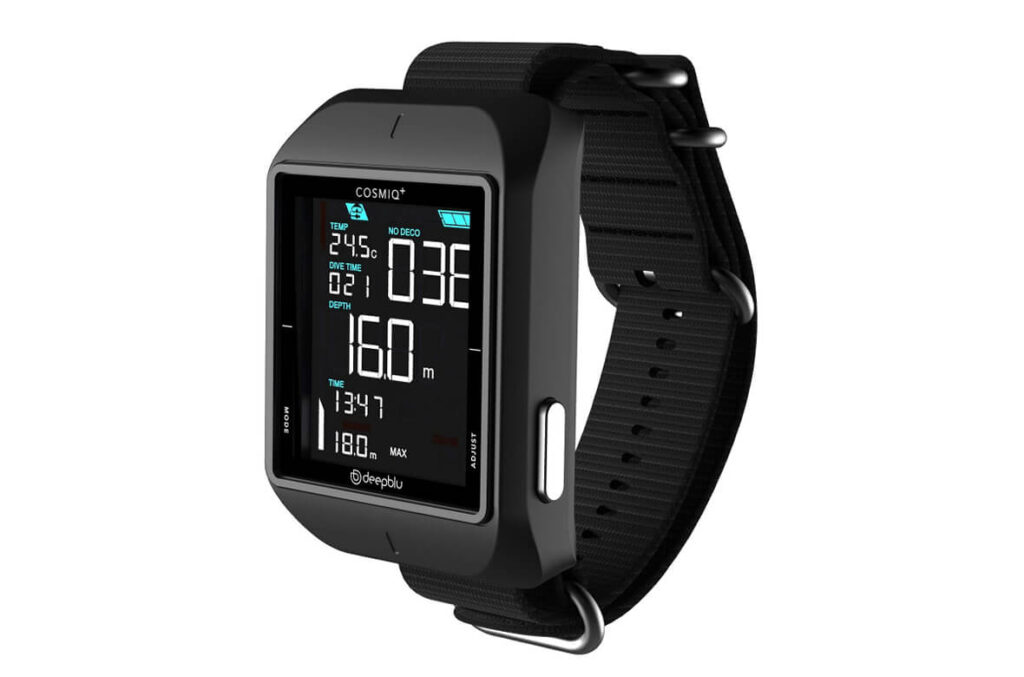
Where to Buy:
- Price: > $
- High Definition Display
- Big Logbook (160 hours)
- Rechargeable Battery
Stylish and modern, the Deepblue Cosmiq dive computer looks a lot more expensive than it really is.
What really sets it apart is the bright, high definition 2.2 inch display, which is extremely easy to read even in complete darkness. Most dive computers, even more expensive ones have low-definition dot-matrix displays.
Also, whilst most dive computers safety stop and rapid ascent alarms consist of a loud beeping, the Deepblu Cosmiq buzzes and flashes when its alarm is going off.
There’s three dive modes: scuba (air or nitrox), bottom timer and free dive. It is operated via two buttons with an extremely easy and simple user interface. The logbook is an impressive 160 hours long.
Unlike other dive computers, you don’t need to replace the battery – instead you can charge it with a USB magnetic charging device – it carries a battery life of 7 – 12 hours of diving time.
This is a great dive computer; surprisingly affordable and offering awesome value for money.
PROS:
- Cheap
- High Definition Display
- Big logbook
- Rechargeable Battery
- Alarm includes buzzer and LED’s lights in addition to sounds
CONS:
- Alarm only buzzes and flashes – no beeping
- No freedive mode or off mode
8) Budget Watch-Sized: Cressi Goa
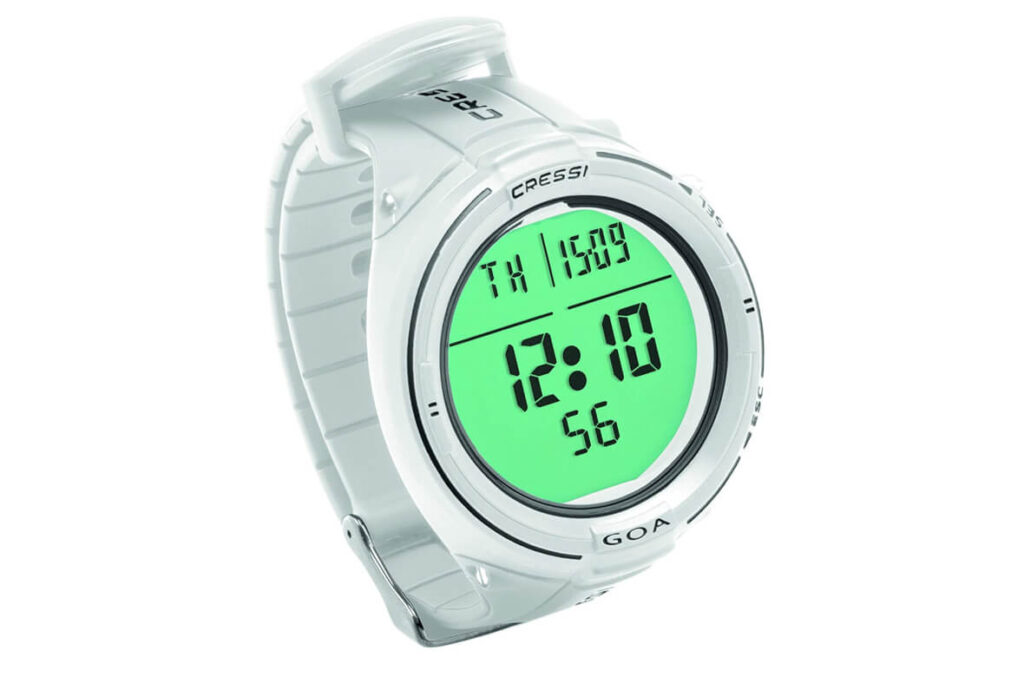
Where to Buy:
- Price: > $
- Watch-Sized
- Customisable Alarms
- Only gives essential Dive Profile Info
The Cressi Goa is one of the cheapest dive computers on our list but surprisingly it is also one of the most compact with a case diameter of just 48 mm making it the same size as a watch allowing it to be stylishly worn for everyday use.
It has a simple two-button user interface and the dot-matrix display only shows the most relevant dive profile data (depth, deco time and dive time) to keep things simple. Users can customise the diving alarms and backlight brightness.
This is a simple and low cost dive computer yet one that is reliable, durable and extremely sleek looking.
PROS:
- Cheap
- Easy to Use
- Watch-Sized
CONS:
- Limited Features
9) Many Colours: Aqualung i200C
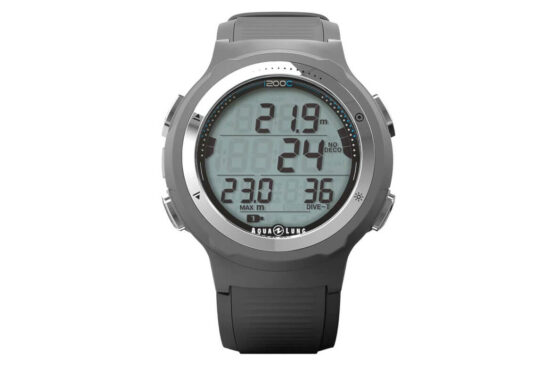
Where to Buy:
- Price: > $$
- Many Colours available for Strap and Case
- Four Button User-Interface
The smart-looking Aqualung i200 is one of the very few dive computers on the market where both the strap and case are available in multiple different colours.
It works in air, nitrox and freedive modes and is operated via four buttons for rapid settings selection. Sadly, the dive log is truly tiny at just 20 hours long, shorter than that of any other dive computer. However, at least you can easily download dive data to the app via bluetooth connection to free up the dive log.
With automatic activation upon immersion in water, a simple user interface and a user changeable battery, this is an easy to use dive computer; durable and reliable and with the unusual advantage of a huge colour selection.
PROS:
- Compact
- Many Colours
- Durable
CONS:
- Tiny Dive Log
- Limited Features
10) Cheap Bluetooth Tech: Aqualung i300C
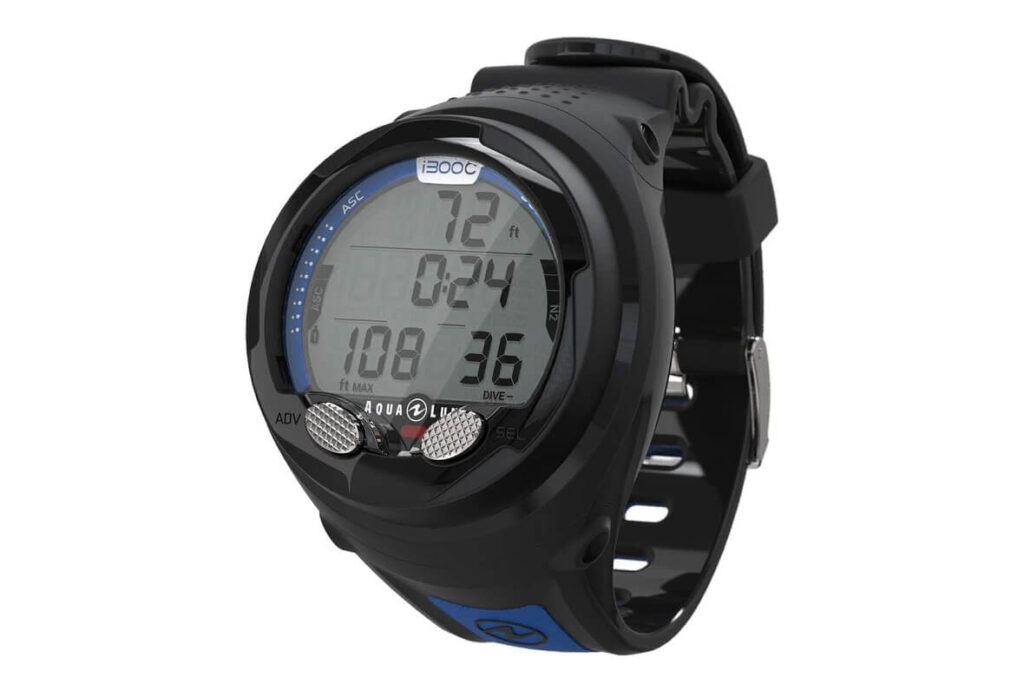
Where to Buy:
- Price: > $$
- Bluetooth Tech
- Easy to Use
The Aqualung i300C has all of the standard functions a diver needs.: audible alarms, no decompression stop, air / nitrox mode, free dive mode and gauge mode.
It’s one of the cheapest dive computers to feature bluetooth compatibility. You can wirelessly interact with you i300 using the latest bluetooth technology using your smartphone device and the free Diverlog+ app.
A useful feature not found in many other dive computers is the fact that it also retains data when you swap out the battery.
It has a chic, modern design and is surprisingly large; more so than the Aqualung I200 as it has a display diameter of 43mm. This dive computer has been designed especially for beginner’s: the screen is easy to read, has a powerful backlight and an extremely easy to operate single button user interface.
PROS:
- Bluetooth Tech
- Easy-to-use interface
CONS:
- Bulky
- No Special Features
Diving Squad Debriefing
You might not realize it just yet, but this dive journey is life-changing. It opens up your eyes to an entire world that humans still know so little about.
As you’re drifting through the crystal clear waters of the Caribbean or admiring the rainbowed colored reefs of the Galapagos, it will be difficult not to think how intricately and marvelous life on Earth is.
As explorer Dr. Sylvia Earl said, ”Every time I slip into the ocean, it’s like going home.” The safety and security a dive watch brings its user will get you feeling like the underwater world is yours too in no time.
Related Reads:
Support the Squad!
We are part of the Amazon Services LLC Associate Program. If you make a purchase on amazon after clicking a link on Diving Squad, we earn a small commission fee, at no extra cost to yourself.
We are also part of several other affiliate programs so if you click on a Diving Squad affiliate link that results in you booking a liveaboard, booking accommodation, purchasing insurance or buying a product somewhere else, once more we make a small commission, without it costing you a cent extra. Thanks!
